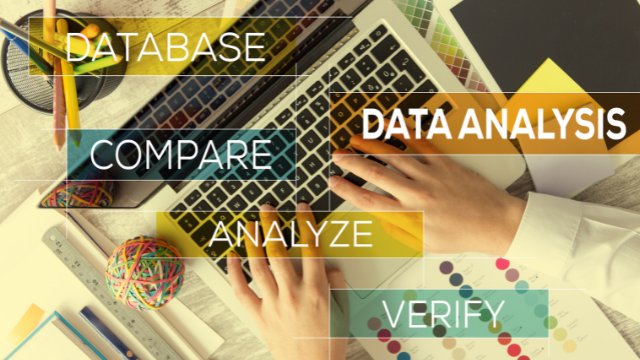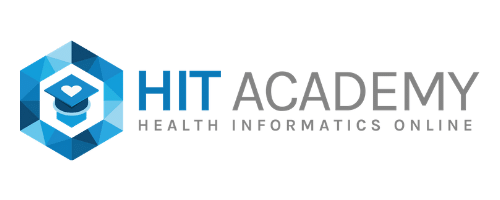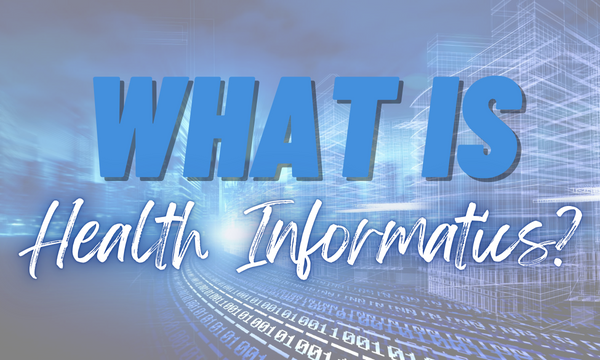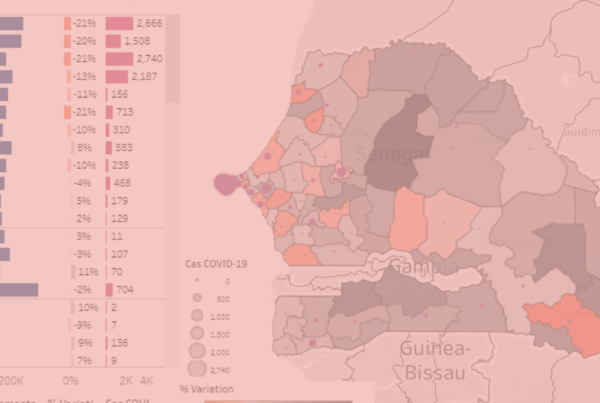The Ultimate Guide: Becoming A Healthcare Data Analyst
+(Bonus) 6 Tips to Becoming a Healthcare Data Analysts
Table of Content:
- What is a Healthcare Data Analyst?
- What does a Healthcare Data Analyst do?
- What types of data do Healthcare Data Analyst work with?
- How much does a healthcare Analyst make?
- Are you right for a Healthcare Data Analyst role?
- How to become a Healthcare Data Analyst?

What is a Healthcare Data Analyst?
A healthcare data analyst is a professional who uses data to guide decision making in the healthcare industry. Healthcare Data analysts collect, process, and analyze health information to support the delivery of quality patient care. They use their findings to improve patient outcomes, reduce costs, and optimize healthcare operations.
Healthcare data analysts play a critical role in improving the quality and efficiency of patient care. They work with a variety of data sources, including electronic health records, claims data, and clinical data. By analyzing this data, they are able to identify patterns and trends that can help improve patient outcomes.
In addition to their analytical skills, healthcare data analysts must also be excellent communicators. They need to be able to clearly present their findings to stakeholders, including healthcare providers, administrators, and policy-makers. They also need to be able to collaborate with other members of the healthcare team to ensure that their recommendations are implemented effectively.

What does a Healthcare Data Analyst do?
Healthcare data analysts help improve healthcare outcomes by analyzing data from a variety of sources. They commonly work on the business side of medicine, improving patient care, or streamlining the way things are run. Other names you might come across when looking for healthcare data analyst roles include healthcare business analyst, healthcare information management analyst, or simply healthcare consultant.
When it comes to the specific duties of a healthcare data analyst, it really depends on the organization they work for and the specific project they’re working on. However, there are some common tasks that are often associated with the role. These include:
- reviewing data to identify trends and patterns
- developing reports and presentations to share findings
- working with stakeholders to understand their needs and goals
- designing and conducting data analysis projects
- developing and implementing databases
- cleaning and manipulating data
- using statistical methods to analyze data
- creating visualizations to communicate results
- writing code to automate data analysis tasks.
As you can see, the role of healthcare data analyst is quite varied, and the specific duties will vary depending on the organization and project.

What types of data do Healthcare Data Analyst work with?
Healthcare Data Analysts work with a variety of data types, including clinical data, claims and costs data, pharmaceutical data, and behavioral and sentiment data. Clinical data includes information about patients’ health histories and diagnoses. Claims and costs data includes information about how much money healthcare providers have spent on patients’ care and what services have been provided. Pharmaceutical data includes information about the medications that patients are taking, how effective they are, and any side effects they may have. Behavioral and sentiment data includes information about patients’ attitudes towards their health and wellbeing, as well as their overall satisfaction with their care.
Clinical data
Healthcare Data Analysts use clinical data to understand trends in patients’ health and to predict how patients will respond to treatment. For example, analysts may use vitals data from past patient visits to create a model that predicts how a patient’s blood pressure will respond to a certain medication. This information can help doctors choose the best course of treatment for their patients.
Claims and costs data
Healthcare Data Analysts use claims and costs data to understand how much money healthcare providers are spending on care, and to identify areas where cost savings can be achieved. For example, analysts may use claims data to identify which procedures are being performed most often, and which ones are costing the most money. This information can help healthcare providers make decisions about which procedures to perform, and how to price them.
Pharmaceutical data
Healthcare Data Analysts use pharmaceutical data to understand which medications are being prescribed most often, and to identify potential side effects of medications. For example, analysts may use prescription data to identify which drugs are being prescribed most often for a certain condition. This information can help doctors choose the best course of treatment for their patients.
Behavioral and sentiment data
Healthcare Data Analysts use behavioral and sentiment data to understand how patients feel about their health and wellbeing. For example, analysts may use patient surveys to identify which factors are most important to patients when choosing a healthcare provider. This information can help healthcare providers make decisions about how to improve the patient experience.
How much does a healthcare Analyst Make?
The healthcare industry offers a number of interesting and well-paying career opportunities for data analysts. Data analysts in general earn above the US national average, but those working in the healthcare industry tend to receive even higher paychecks. This makes the healthcare field an attractive option for those looking to pursue a career in data analysis.
Healthcare data analysts are in high demand in the United States, so this can be a great career choice with plenty of opportunity for growth. The salary range for healthcare data analysts is between $52,000 and $98,000. This is a broad range, with the median salary being $75,000.
Are you right for a Healthcare Data Analyst role?
Do you have the attention to detail and knack for numbers that are necessary for a healthcare data analyst role? If you enjoy solving complex problems and work well under pressure, then this might be a good fit for you. In order to be successful in this career, it is important to be able to collaborate with others, manage multiple tasks simultaneously,
Healthcare professionals with previous experience are in a great position to become healthcare data analysts. Their domain knowledge can be directly applied to the position, which is extremely beneficial. For example, HIM professionals-such as medical coders, medical record clerks, charge audit analysts, or auditors-are often well-suited for health data analyst positions because they are already familiar with applying medical codes to clinical data. They understand the EHR systems and clinical workflows, and are knowledgeable about healthcare industry terminology, like ICD, CPT, LOINC, and SNOMED. Nurses and medical assistants are also be great candidates because of their clinical care experience and their understanding of clinical data.
How to become a Healthcare Data Analyst?
There are many paths you can take to become a healthcare data analyst. Many positions require a bachelor’s degree in health information management or health information management and technology (HIMT). But in many cases, if you can prove you have the skills required such as data warehousing and mining, health information technology standards, SQL programming and data analytics, quality assessment, and project management, you may be able to qualify for the position without a formal degree.
To become a healthcare data analyst, you need to be able to acquire, manage, analyze, interpret, and transform data into accurate and timely information. The Certified Health Data Analyst (CHDA) credential from the American Health Information Management Association (AHIMA) is a good way to demonstrate your ability to do this.

6 Tips to Becoming a Healthcare Data Analysts:
1. Healthcare data is everywhere
There’s no denying it – healthcare data is everywhere. It’s in the hospital systems, doctors’ offices, clinics, and pharmacies. It’s in our homes, on our smartphones, and in our fitness trackers. This deluge of data has the potential to transform the healthcare industry – but only if we can make sense of it all.
Healthcare data is becoming increasingly more accessible and easier to collect due to the rise of technology. This data can be used by healthcare professionals to improve the quality and delivery of healthcare.
For example, by analyzing data from electronic health records (EHRs), doctors can see how well a patient responds to a certain medication or treatment. They can also see how common certain conditions are in their area, which can help them make better treatment decisions.
In addition, data from wearable devices and smartphones can be used to monitor patients’ health between visits to the doctor. This information can help doctors catch early signs of a problem and prevent it from becoming worse.
The use of healthcare data is revolutionizing the healthcare industry for the better. By making use of this data, healthcare professionals are able to provide patients with better care and improve outcomes.
2. SQL skills are a must
SQL is a powerful tool that can be used to manage clinical databases. It allows healthcare professionals to easily query and analyze data from electronic health records (EHRs) and other sources.
SQL can be used to create reports and track patient outcomes. It can also be used to identify trends in patient data. This information can help doctors and other healthcare professionals improve the quality and delivery of healthcare.
SQL is a valuable tool for managing clinical databases. It helps healthcare professionals make better use of data from EHRs and other sources. This information can help improve the quality and delivery of healthcare for patients.
Here’s an example of a SQL query used by Healthcare Data Analyst
SELECT medication_id, dose, days_supply, unit_dose, from_date, to_date
FROM medication
WHERE days_supply
BETWEEN from_date AND to_date
The SELECT statement is choosing which information or “columns” from the medication table to show. The dose, days_supply, unit_dose, from_date and to_date are all being shown. The FROM clause is telling the database what table to start looking for information and the WHERE clause is telling it which information to show. This query will return results for any medication where the days_supply is between from_date and to_date.
This example shows the importance of knowing SQL as a Healthcare Data Analyst. If you want to answer specific questions about your data, you will need to be able to write SQL queries. Analyzing information in clinical databases is the foundation of being a Healthcare Data Analyst.
SQL is a powerful tool that can help you answer complex questions about your data. If you are new to SQL, there are many resources available to help you learn the basics. Don’t be afraid to ask for help from your colleagues or search online for answers to your questions.
3. Learn to work with large data sets
As a healthcare data analyst, it is important to be able to work with large data sets. This data comes from a variety of sources, including electronic health records (EHRs), wearables, and smartphones. The amount of data collected by the healthcare industry is constantly growing due to the rise of technology.
In order to effectively analyze this data, analysts must be able to clean, manipulate, and transform it into a format that can be used for analysis. This process can be challenging, but it is essential in order to glean insights from the data.
In addition to working with large data sets, healthcare data analysts must also be able to work with data from different sources. This data can come in a variety of formats, which can make it difficult to work with. However, analysts must be able to clean, manipulate, and integrate this data in order to effectively use it for analysis.
The ability to work with large data sets and data from different sources is essential for healthcare data analysts. By being able to effectively manage and analyze this data, analysts can provide insights that can improve the quality and delivery of healthcare.
Common of a Database software used by Healthcare Data Analyst
- PostgreSQL
- Microsoft Access
- Microsoft SQL Server
- Oracle Database
- MySQL
- IBM DB2
- Microsoft Azure SQL Database
- Amazon Relational Database Service (Amazon RDS)
- Google Cloud SQL
These are just a few of the most popular databases used by healthcare data analysts. Each database has its own strengths and weaknesses, so it is important to choose the right one for the task at hand.
When working with large data sets, healthcare data analysts must be able to clean, manipulate, and transform the data into a format that can be used for analysis. This process can be challenging, but it is essential in order to glean insights from the data. In addition to working with large data sets, analysts must also be able to work with data from different sources. This data can come in a variety of formats, which can make it difficult to work with. However, analysts must be able to clean, manipulate, and integrate this data in order to effectively use it for analysis.
The ability to work with large data sets and data from different sources is essential for healthcare data analysts. By being able to effectively manage and analyze this data, analysts can provide insights that can improve the quality and delivery of healthcare.
4. Understand the healthcare world
Healthcare data analysts must understand the healthcare world in order to effectively do their job. This includes understanding how healthcare insurance works, as well as how to work with healthcare coding standards such as HL7 (Health Level Seven) and interoperability standards.
Healthcare insurance can be complicated, and it is important for analysts to understand the different types of plans and policies. This information can help them better understand the data they are working with. In addition, analysts need to be aware of how changes in the insurance industry can impact the data.
HL7 is a healthcare coding standard that is used to transfer data between different systems. It is important for analysts to be familiar with this standard so that they can work with data from different sources. HL7 is one of the most common healthcare coding standards, so it is likely that analysts will need to know how to use it.
Interoperability standards are used to ensure that data can be transferred between different systems. These standards are important for healthcare data analysts because they allow them to work with data from different sources. By understanding these standards, analysts can more easily integrate data into their analysis.
Healthcare Data Analyst needs to understand the information and codes similar to the HCFA 1500 form in order to properly analyze the data. This form is outdated and has now been digitized but shows the use case for clinical coding. The form includes space for the patient’s personal information, insurance information, and the details of the services provided.
Healthcare Terminology used by Healthcare Data Analyst
Healthcare data analysts must understand healthcare industry terminology in order to do their job. This includes understanding terms such as ICD, CPT, LOINC, and SNOMED.
- ICD is the International Statistical Classification of Diseases and Related Health Problems. This is a coding system that is used to track diseases and medical conditions. Healthcare data analysts need to be familiar with this system so that they can work with data from different sources.
- CPT is the Current Procedural Terminology. This is a coding system that is used to track medical procedures. Healthcare data analysts need to be familiar with this system so that they can work with data from different sources.
- LOINC is the Logical Observation Identifiers Names and Codes. This is a coding system that is used to track laboratory tests and results. Healthcare data analysts need to be familiar with this system so that they can work with data from different sources.
- SNOMED is the Systematized Nomenclature of Medicine. This is a coding system that is used to track medical concepts. Healthcare data analysts need to be familiar with this system so that they can work with data from different sources.
Healthcare data analysts must also understand how the healthcare industry works in order to effectively do their job. This includes understanding the different types of healthcare providers and facilities, as well as the different types of healthcare services.
- Healthcare providers include doctors, nurses, and other medical professionals. Healthcare facilities include hospitals, clinics, and other care centers. Healthcare data analysts need to be familiar with these types of providers and facilities so that they can work with data from different sources.
- Healthcare services include preventive care, diagnostic testing, treatment, and other types of care. Healthcare data analysts need to be familiar with these types of services so that they can work with data from different sources.
It is essential to familiarize yourself with the healthcare system and how things operate in order to be a successful healthcare data analyst. This includes understanding how healthcare insurance works and being familiar with healthcare coding standards such as HL7. In addition, analysts need to be aware of how changes in the healthcare industry can impact the data. By understanding these concepts, analysts can better integrate data into their analysis.
5. Tell stories with data
One of the most important skills for healthcare data analysts is the ability to tell stories with data. Data can be used to support or refute hypotheses, and it is important for analysts to be able to effectively communicate their findings. In order to do this, analysts must be able to understand and interpret data, as well as create visuals that effectively communicate their findings.
Healthcare data analysts use a variety of BI tools, such as Power BI or Tableau, to help them clean, manipulate, and analyze data. These tools allow analysts to visualize data in a variety of ways, which can help them better understand the data they are working with. In addition, these tools can help analysts share their findings with others.
Power BI is a BI tool that allows analysts to create visuals from data. This tool can be used to create dashboards and reports, which can help analysts communicate their findings. In addition, Power BI provides a variety of features that can be used to analyze data. For example, Power BI has a built-in machine learning algorithm that can be used to predict values in a dataset.
Tableau is another BI tool that healthcare data analysts may use. This tool allows analysts to create visuals from data, and it also provides a variety of features that can be used to analyze data. Tableau is often used by analysts because it provides a wide range of options for visualizing data. This can be helpful for understanding complex datasets.
 The three main points that the content makes are: (1) healthcare data analysts must be able to tell stories with data in order to effectively communicate their findings, (2) analysts use BI tools, such as Power BI and Tableau, to help them clean, manipulate, and analyze data, and (3) these tools allow analysts to visualize data in a variety of ways which can help them better understand the data they are working with.
The three main points that the content makes are: (1) healthcare data analysts must be able to tell stories with data in order to effectively communicate their findings, (2) analysts use BI tools, such as Power BI and Tableau, to help them clean, manipulate, and analyze data, and (3) these tools allow analysts to visualize data in a variety of ways which can help them better understand the data they are working with.
6. Use data to improve healthcare
The ultimate goal for healthcare data analysts is to use data to improve healthcare. Data can be used to identify trends and patterns, as well as to assess the impact of interventions. By understanding how data can be used to improve healthcare, analysts can make a real difference in the quality and delivery of care.
Healthcare data analysts play a vital role in improving the quality and delivery of healthcare. They use data to identify trends and patterns, as well as to assess the impact of interventions. By understanding how data can be used to improve healthcare, analysts can make a real difference in the quality and delivery of care.
Conclusion
In conclusion, healthcare data analysts play an important role in the healthcare industry. Their job is to use data to improve healthcare by identifying trends and patterns, and assessing the impact of interventions. By understanding how data can be used to improve healthcare, analysts can make a real difference in the quality and delivery of care. In order to be successful, analysts need to be familiar with the healthcare system, understand how healthcare insurance works, and be aware of changes in the industry. They also need to be able to tell stories with data in order to effectively communicate their findings. BI tools, such as Power BI and Tableau, can help analysts do this by allowing them to visualize data in a variety of ways.






Recent Comments